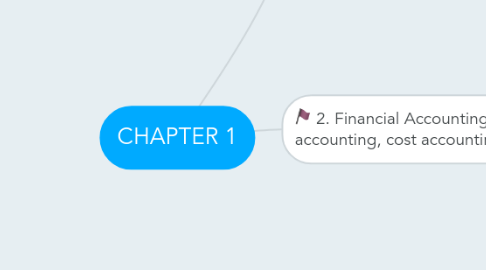
1. 1. All businesses are concerned about revenues and costs
1.1. Managers use cost accounting information to make decisions related to strategy formulation, research and development, budgeting, production planning and pricing, among others
2. 2. Financial Accounting, management accounting, cost accounting
2.1. 2.1 Financial accounting
2.1.1. Focuses on reporting to external parties such as investors, government agencies, banks and suppliers.
2.1.2. It measures and records business transactions and provides financial statements that are based on generally accepted accounting principles (GAAP)
2.1.3. The most important way that financial accounting information affect managers'decisions and actions is through compensation, which is often, in part, based on numbers in financial
2.2. Management accounting
2.2.1. Measures, analyzes and reports financial and nonfinancial information that helps managers make decisions to fulfill the goals of an organization
2.2.2. Managers use management accounting information to develop, communicate and implement strategy
2.2.3. Management accounting information and reports do not have to follow set principles or rules
2.3. Cost accounting
2.3.1. Measures, analyzes and reports financial and nonfinancial information relating to the costs of acquiring or using resources in an organization
2.3.2. Modern cost accounting takes the perspective that collecting cost information is a function of the management decisions being made
2.3.3. The distinction between management accounting and cost accounting is not so clear-cut and we often use these terms interchangeably in the book

